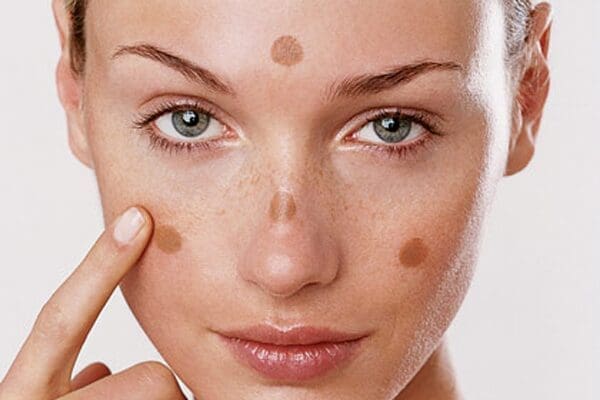
What Causes Melasma
Melasma is caused by hormonal changes, sun exposure, and genetics, leading to dark skin patches.
Melasma is a prevalent skin condition that creates dark pigment spots, particularly on the face—most commonly affecting the cheeks, nose, and upper lip. Many people often mistake these patches for other skin issues; however, their formation is unique.
You might naturally feel concerned about the appearance of melasma; nevertheless, unnecessary worry can aggravate the condition. Therefore, let’s explore the underlying causes and triggers of melasma in greater detail to understand what causes it.
Understanding the Causes of Melasma
One of the most significant culprits behind melasma is prolonged and unprotected exposure to sunlight, especially ultraviolet (UV) radiation. When your skin faces the sun’s rays, it triggers an increase in melanin production, the natural pigment that gives your skin its color. Overexposure can lead to an excess of melanin, resulting in those dark patches. What primarily causes melasma in such cases is excessive sun exposure. Consequently, applying a broad-spectrum sunscreen containing zinc oxide daily is essential for optimal protection against melasma. This proactive measure not only shields your skin from harmful UV rays but also acts as a barrier against high-energy visible (HEV) light, which can also contribute to pigment changes.
Furthermore, hormonal fluctuations significantly influence the onset of melasma. Many women experience this condition during pregnancy, where hormonal shifts lead to what people commonly call “the mask of pregnancy.” During this time, changing hormone levels trigger skin cells to produce increased amounts of melanin, resulting in dark, irregular patches on the face. Hormonal changes are a prevalent cause of melasma. Additionally, hormonal therapies or contraceptives can also disrupt the body’s natural hormonal balance, making pigmentation issues worse.
The Impact of Harsh Chemicals and Ingredients on Melasma Development
Moreover, various cosmetic products and ingredients in skincare formulations can irritate your sensitive skin, potentially leading to melasma. For instance, certain ingredients like fragrances or harsh chemicals may provoke inflammation, further contributing to pigmentation problems. Products that irritate the skin can be a cause behind melasma. Therefore, you should be vigilant about the products you apply to your skin and consider opting for hypoallergenic or non-comedogenic options.
In addition, genetic predisposition plays a significant role in melasma. If your family members have experienced this skin condition, you may have a higher risk of developing it. Genetics can be a factor in what causes melasma. Moreover, specific underlying health issues, such as thyroid disorders or adrenal insufficiency, have associations with melasma. These medical conditions can affect hormone levels and skin health, making it crucial for you to consider your overall well-being when addressing melasma.
Furthermore, you can incorporate vitamin supplements into your routine to support your skin’s health and help alleviate melasma. Vitamins play a crucial role in skin repair, promoting a more even tone and overall radiance. Additionally, maintaining a well-balanced diet rich in antioxidants can enhance your skin health and minimize pigmentation.
Understanding the Triggers and Causes of Melasma
While experts have not pinpointed the exact origins of melasma, understanding the triggering factors for this condition is crucial for managing it effectively. In summary, sun exposure, hormonal changes, certain medications, and even skincare products all contribute to the development of melasma. Being aware of what commonly causes melasma empowers you to take preventive steps and pursue tailored treatments for effective management.
Remember, melasma is a common skin condition, and you should not let it diminish your confidence. Fortunately, you have access to a variety of gentle and effective treatments, ranging from topical creams to professional dermatological procedures. Moreover, using natural BB creams or tinted sunscreens can help you cover imperfections while providing essential sun protection.
If you want to learn more about the causes and management techniques for melasma, consider signing up for our blog’s mailing list. We offer valuable insights and tips to help you keep your skin looking vibrant and healthy.
Healthline What Triggers Melasma

